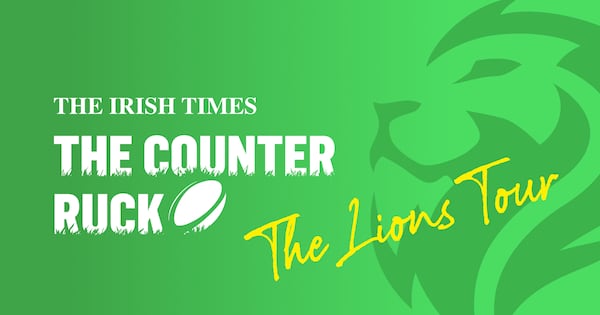Irish rugby was targeted with the highest number of anti-doping samples collected by Sport Ireland in 2023, moving ahead of athletics, rowing and cycling for the first time.
According to the 2023 annual review, now in its 24th year, there were 1,595 tests carried out across 32 sports, or 1,826 samples in all (one test encompasses all the samples collected for one athlete within that visit).
The Irish Rugby Football Union topped the list with 284 samples collected, ahead of Athletics Ireland (252), Rowing Ireland (230), Cycling Ireland (192), the Gaelic Athletic Association (180) and Swim Ireland (125).
It’s the first time rugby has moved ahead of both athletics and cycling, traditionally the most-tested of sports, although testing is still not carried out in rugby at schools level, with those competitions not under the official remit of the IRFU.
READ MORE
Sport Ireland chief executive Dr Úna May, who helped establish and originally headed the anti-doping programme in 1999, admitted the testing now was effectively more about the deterrent factor, but still represented value for money.
The 1,595 tests marked another increase on the 1,415 tests carried out during 2022, with the overall cost of the anti-doping programme also increasing again to €2.44 million, up on the €2.05 million from 2022. This includes €1.34 million spent on testing, plus other costs of €596,477 (legal advice associated with the programme, consultancy fees and other costs).
There was a single anti-doping rule violation (ADRV) reported in 2023. Aidan Byrne, from Ballinastoe Tug of War Club in Wicklow, tested positive for the cocaine metabolite, benzoylecgonine, during an in-competition test at a national event in July 2023. Byrne did not dispute the violation and a four-year ban was imposed.
There is one additional ADRV pending, a case for “evading, refusing or failing to submit to sample collection”, the details of which were not disclosed.
“It depends really what you consider to be value for money,” said May of the high costs involved. “From our point of view, it’s about protecting Irish sport, protecting the reputation of our athletes, and protecting our investment in sport.
“As our investment has grown and grown, it’s really important that we protect that. We’ve always considered the anti-doping programme to be almost an insurance policy against the investment we make. So while our athletes’ performances are improving, it’s very important that we continue investing in anti-doping, and don’t just decide the job is done now, we can sit back.
“I say it every year that I’m not naive enough to think we don’t have any doping in Irish sport. But I think at the highest level of Irish sport, where our testing programme is focused, I believe that we are on top of the issue, that our athletes are very aware of the risks associated with doping in sport, that the process is rigorous and the confidence in our system is very high.”
Also speaking at the report launch was Günter Younger, director of intelligence and investigations (I&I) at the World Anti-doping Agency (Wada), who emphasised the need to further shift away from traditional testing practices.
“Before, the entire anti-doping community was based on testing strategies, until 2015, 2016,” he said. “The Russians’ case brought some good understanding of intelligence and investigations, and if we get 10 per cent of the budget on I&I, I think it would be a good step.
“Testing will always be the main part, because there is the deterrent impact as well, but I do think we need to increase more of the intelligence side, that we spread the news, and that it’s trustworthy.”
In the previous report, for 2022, Athletics Ireland was the most tested sport, followed by the IRFU, Cycling Ireland, Rowing Ireland and the GAA. According to May, every sport is target-tested depending on several factors.
“Every year we carry out a rigorous test distribution plan, which is based on a lot of information, and a number of different categories that we look at. The type of sport, the demands of the sport, the level that our players or athletes are participating [at]. And for the GAA, the cultural significance of the sport.
“At the end of the day, we do have to manage our budget... if we tested more in the GAA, then we’d be testing less maybe in say cycling and athletics, sports [that] people expect we should be doing a significant amount of tests in.
“We’ve always retained the right to test GAA players if we have received information through our hotline, or something like that, to test outside the training environment.”
Sport by sport anti-doping testing 2023
National Governing Body/Number of samples
American Football Ireland 6
Athletics Ireland 252
Badminton Ireland 11
Basketball Ireland 6
Camogie Association 13
Canoeing Ireland 28
Cricket Ireland 16
Cycling Ireland 192
Football Association of Ireland 82
Gaelic Athletic Association 180
Golf Ireland 7
Gymnastics Ireland 25
Hockey Ireland 16
Horse Sport Ireland 13
Irish Amateur Wrestling Association 8
Irish Athletic Boxing Association 82
Irish Judo Association 15
Irish Martial Arts Commission 10
Irish Rugby Football Union 284
Irish Squash 4
Taekwondo Ireland 12
Tug of War Ireland 8
Irish Wheelchair Association Sport 6
Ladies’ Gaelic Football Association 8
Motor Cycling Ireland 13
Motorsport Ireland 28
Paralympics Ireland 51
Pentathlon Ireland 7
Rowing Ireland 230
Swim Ireland 125
Triathlon Ireland 73
Weightlifting Ireland 15
TOTAL: 1,826















